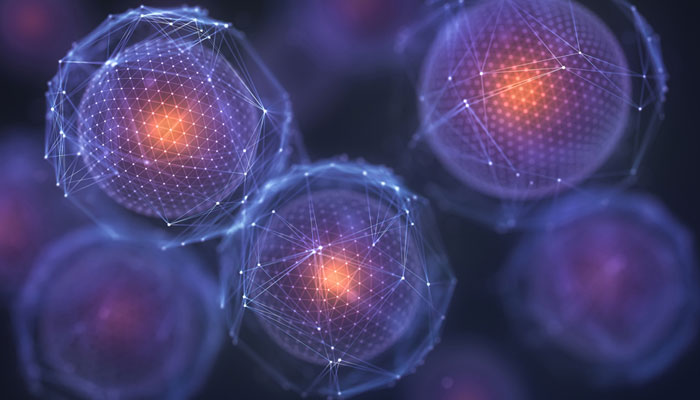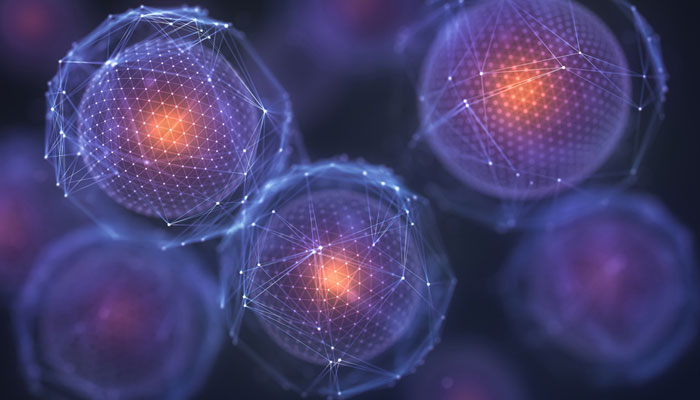
One of the fastest growing fields of modern advancement in the field of medicine is stem cell which has brought a sense of new life. The importance of this field can be estimated from the fact that it has made it possible to treat diseases which were not possible to treat. The following few examples, though not fully covering its scope, will certainly highlight its importance.
Mice made from stem cells
Stem cells are found in our body, their job is to repair damaged cartilage (tissues) and organs in the body. They are part of the body’s most powerful repair system. Stem cells can transform into cells with other specialized functions, such as heart, kidney, muscle or red blood cells. So it keeps replacing old tissues with new tissues. In 1899, scientists discovered how these cells could be extracted from human embryos and grown in the laboratory.
Two years ago, another major research in this regard came out that certain adult cells (cells), such as skin cells, can be genetically re-introduced into the body and transformed into cells that are similar to stem cells. These cells were first discovered in mice. In the future, the use of stem cells will play an important role in repairing damaged heart, kidney and other tissues, which is expected to revolutionize the treatment of diseases. The first mouse made from rat skin has been developed by scientists working at the Chinese Academy of Science, Beijing. It has also been confirmed that stem cells are present in all parts of the body.
Bandage made from stem cells
Stem cell therapy is proving to be a revolutionary step for diseases like kidney and heart cells or diabetes. Stem cells are found in humans and other animals that divide to make more stem cells. (heart, kidney, pancreas) etc. Stem cell therapy has long been used for bone marrow transplants and blood cancers. Scientists from the University of Bristol in the UK have developed a bandage, in which stem cells are attached, this bandage will be useful in the repair of soft bones (cartrillage), which wounds are usually very difficult to heal. are
The stem cell will be extracted from the bone marrow and undergo a further process of division, after which it will be embedded in a special membrane. And this bone will be inserted into the cracked or soft bone and the stem cells in the membrane will help in the healing of the wound. We all know that building muscle is very difficult. Scientists at the University of Technology in the Netherlands have invented a way to create muscle tissue with blood vessels through bioengineering.
Muscle tissue needs to be organized in such a way that it all aligns in the same direction, to produce force, and to maintain the blood supply to each muscle, so that nutrients can reach them properly. The problem of alignment of the muscles in a uniform direction was solved by rigidly attaching pieces of tissue using velcro. The tension created by the growth process caused the muscles and blood vessels to line up instead of randomly. Scientists are trying to apply this method to patients whose organs are lost as a result of accidents, injuries or cancer operations.
Preparing to give sight to the blind
There are two types of stem cells. Embryonic stem cells obtained from animal embryos (inner cell material of blastocyles and mature stem cells found in mature tissues of different organs). Stem cells can be divided into different types of cells (cells). nerves, kidney, heart cells, etc.) as they can be used in the repair or treatment of broken or various diseased organs.
Therefore, stem cells will also change the way of medicine in the future. This is one of the most important discoveries in the future for the restoration of vision for those who have lost their vision due to heat or burns. At the University of Modena in Italy, 82 out of 107 people who lost their sight due to burns were treated with stem cells to restore their sight.
Mending a broken heart
Heart diseases are currently the leading cause of death worldwide. Rapid advances in stem cell research have brought new hope for heart patients as they can be used to create different types of heart tissue. Trials of different heart cell treatment methods using stem cells are underway in the US, Germany, UK, Korea and Brazil.
Most of these stem cells are obtained from the patient’s own bone marrow. At Massachusetts General Hospital in Boston, there is evidence of how stem cells from a pool of multipotent cells transform into different tissues of the heart. It is promising that in the future stem cells can be used to treat failing hearts.
Making blood from stem cells
Advances in the field of stem cells in recent years are expected to change the face of medicine. Stem cells can be transformed into heart, kidney and other types of cells, which is expected to solve the problem of repairing damaged organs. Initially, they could only be made from embryonic Embyonic cells, which made this field of research controversial, but now they can also be made from cells from different body organs, such as bone marrow, skin, etc. Induced Pluripotent Stem Cells and these can be transformed into other cells in the presence of certain stimulating factors.
Embryonic stem cells are now being used to produce red blood cells in quantities that can be used for blood transfusions. This procedure has been developed by the Advanced Technology Cell. A long time ago, an automated red blood cell machine was built that was capable of providing blood that could be transfused internationally.
Treatment of diabetes
Brazilian scientists have finally discovered a stem cell cure for diabetes. Dr. A team led by Julio Voltarelli extracted stem cells from the blood of 51 type 1 diabetes patients. Initially, the weakened immune system of these 51 patients was deliberately destroyed by drugs, in order to remove the harmful cells that attack the Pancreatic Islet.
These patients are then injected with stem cells that rapidly form a new, more robust system. These patients may go without insulin injections or the amount of insulin they inject may be reduced. This was done in 2007, but was considered controversial at the time. Treatment for diabetes is just being introduced. Stem cell research in Pakistan is about to start in two institutes.
Missiles in the War on Cancer
Stem cell research is opening new avenues for the treatment of heart, kidney and other diseases. Stem cells are now being used as a guided missile for cancer treatment. A team of scientists at the Duarte Beckmann Research Institute in Duarte, California genetically modified the brains of mice suffering from brain cancer. The stem cells were injected and the mice were then given anti-cancer drugs.
It was observed that the mice that were first treated with stem cells had a 70 percent reduction in tumor size compared to those without treatment. The method can be used to target even a single cancer cell. Experiments on humans using this concept will soon begin.
New frontiers in the field of stem cell medicine
A new emerging field in the field of medicine is the use of stem cells to repair damaged organs. There are two types of stem cells used in humans. Embryonic stem cells and adult stem cells. Stem cells work together with other cells to repair damaged tissue (tissues) in the body because they have the ability to transform into various other cells in the body. By growing these cells in culture, they can be transformed into various other cells, such as nerve, skin, or intestinal cells.
A recent breakthrough in stem cell research has shown that different types of stem cell release from bone marrow can be induced by infiltration with different drugs. Therefore, instead of using stem cells obtained from different donors (in this case, the patient’s body may refuse to accept those stem cells), the patient’s own stem cells were removed from his bone marrow. It can help in the repair and regeneration of specific tissue(s).
The ability to selectively remove a patient’s own stem cells is a critical advance in this rapidly developing field. The work was carried out by Professor Sarah Rankin of Imperial College London and her colleagues. This development will help speed up the repair of damaged heart tissue and the repair of broken bones and joints.
setTimeout(function(){
!function(f,b,e,v,n,t,s)
{if(f.fbq)return;n=f.fbq=function(){n.callMethod?
n.callMethod.apply(n,arguments):n.queue.push(arguments)};
if(!f._fbq)f._fbq=n;n.push=n;n.loaded=!0;n.version=’2.0′;
n.queue=[];t=b.createElement(e);t.async=!0;
t.src=v;s=b.getElementsByTagName(e)[0];
s.parentNode.insertBefore(t,s)}(window,document,’script’,
‘https://connect.facebook.net/en_US/fbevents.js’);
fbq(‘init’, ‘836181349842357’);
fbq(‘track’, ‘PageView’);
}, 6000);
/*setTimeout(function(){
(function (d, s, id) {
var js, fjs = d.getElementsByTagName(s)[0];
if (d.getElementById(id)) return;
js = d.createElement(s);
js.id = id;
js.src = “//connect.facebook.net/en_US/sdk.js#xfbml=1&version=v2.11&appId=580305968816694”;
fjs.parentNode.insertBefore(js, fjs);
}(document, ‘script’, ‘facebook-jssdk’));
}, 4000);*/



